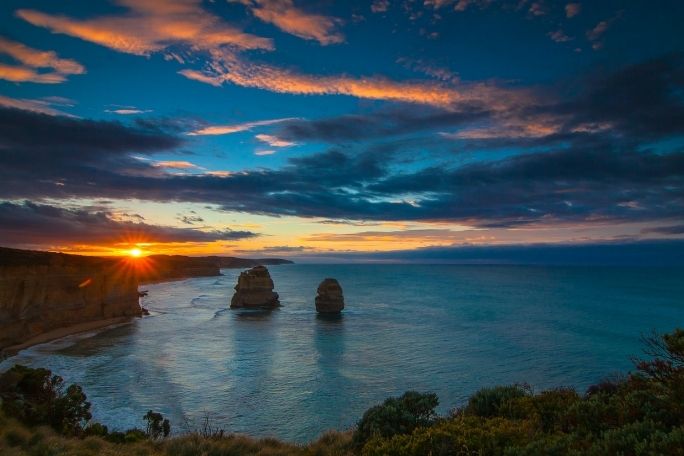Lesson summary
Through a visual storytelling exercise, students explore the future they would like to see. Students begin by responding to different images of the future, clarifying these responses in descriptive terms. They are then asked to explore the Choose Your Climate Future website to understand the impacts that climate change might have on Australia. Based upon this knowledge they create their own vision of the future, creating a visual diary of someone living in the future.
Essential questions:
- How are we affected by our environment?
- How do environmental and human processes affect places and environments?
- What are the consequences of changes to places and environments and how can these changes be managed?
- What is climate change and how will it affect our future?
- How can we affect our future?
Lesson guides and printables
Lesson details
Curriculum mapping
Australian Curriculum content descriptions:
Year 7 English:
- Create literary texts that adapt stylistic features encountered in other texts, for example, narrative viewpoint, structure of stanzas, contrast and juxtaposition (ACELT1625)
- Experiment with text structures and language features and their effects in creating literary texts, for example, using rhythm, sound effects, monologue, layout, navigation and colour (ACELT1805)
- Plan, draft and publish imaginative, informative and persuasive texts, selecting aspects of subject matter and particular language, visual, and audio features to convey information and ideas (ACELY1725)
Year 8 English:
- Experiment with particular language features drawn from different types of texts, including combinations of language and visual choices to create new texts (ACELT1768)
- Create literary texts that draw upon text structures and language features of other texts for particular purposes and effects (ACELT1632)
- Experiment with text structures and language features to refine and clarify ideas to improve the effectiveness of students’ own texts (ACELY1810)
General capabilities: Literacy, Critical and creative thinking, Personal and social capability.
Cross-curriculum priority: Sustainability – O.I.7, O.I.9.
Relevant parts of Year 7 achievement standards: Students create structured and coherent texts for a range of purposes and audiences, and demonstrate how language features and images can be combined for effect. When creating and editing texts they demonstrate understanding of grammar, use a variety of more specialised vocabulary and accurate spelling and punctuation.
Relevant parts of Year 8 achievement standards: Students create texts for different purposes, selecting language to influence audience response. They create and edit texts to create specific effects, they take into account intended purposes and the needs and interests of audiences. They demonstrate understanding of grammar, select vocabulary for effect and use accurate spelling and punctuation.
Unit of work: Earth Hour.
Time required: 60 mins +
Level of teacher scaffolding: Low- oversee activity, facilitate discussion.
Resources required
- Student Worksheet – one copy per student OR computers/tablets to access the online worksheet
- Device capable of presenting a website to the class
- Diary writing tips, The Future – Discussion questions
- Extension – Facebook this
Skills
This lesson is designed to build students’ competencies in the following skills:
- Critical thinking
- Communication
- Creativity
- Social skills
- Digital literacy
Additional info
This lesson has been created in partnership with WWF-Australia. Earth Hour is the world’s largest community-driven climate change campaign. At the centre of Earth Hour is switching off lights to show a commitment to taking action.
Thousands of teachers use Earth Hour’s education program to enrich their curriculum and provide pathways for young people to create change in their world.
For the most up to date Earth Hour dates, times, and events, check here.


Welcome back!
Don't have an account yet?
Log in with:
By signing up to Cool.org you consent and agree to Cool's privacy policy to
store, manage and process your personal information. To read more, please see
our privacy policy here(Opens in new tab).
Create your free Cool.org account.
Many of our resources are free, with an option to upgrade to Cool+ for premium content.
Already have an account?
Sign up with:
By signing up to Cool.org you consent and agree to Cool's privacy policy to
store, manage and process your personal information. To read more, please see
our privacy policy here(Opens in new tab).